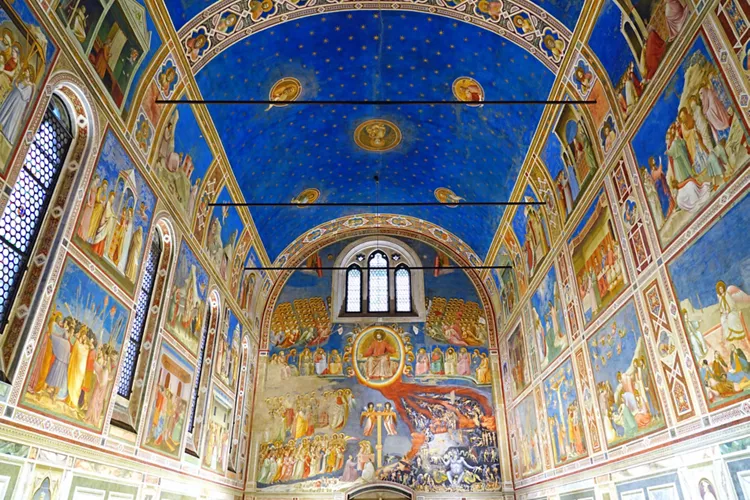This content was automatically translated. View the original text.

Overview
Giotto's famous pictorial cycle
The Scrovegni Chapel in Padua is known throughout the world for the extraordinary pictorial cycle created by Giotto. Named after Santa Maria della Carità, it takes its name from its patron, Enrico degli Scrovegni, who purchased the land of the ancient Roman arena in Padua in the early 1300s. Here, he built a sumptuous palace, the chapel which served as a private oratory and future family mausoleum. He called Florentine painter Giotto for the task, who had already decorated the Basilica of Assisi and completed the work in just two years, between 1303 and 1305.
The series of frescoes unfolds over the entire interior surface of the Chapel, narrating the Story of Salvation in two different itineraries: the first with the Stories of the Life of the Virgin and Christ painted along the naves and on the triumphal arch; the second, with the Vices and Virtues, culminates in the majestic Last Judgement on the counter-façade.
The ceiling of the vaults is a starry blue mantle, while the faces of Mary, Christ and the Prophets are depicted in the roundels. In the presbytery, the sculptural group Madonna and Child between two angels made by the great sculptor Giovanni Pisano in the early 1300s, is still preserved.
The chapel, whose fresco series is listed as a UNESCO World Heritage Site from 2021.
For more information visit the official website
For more information visit the official website